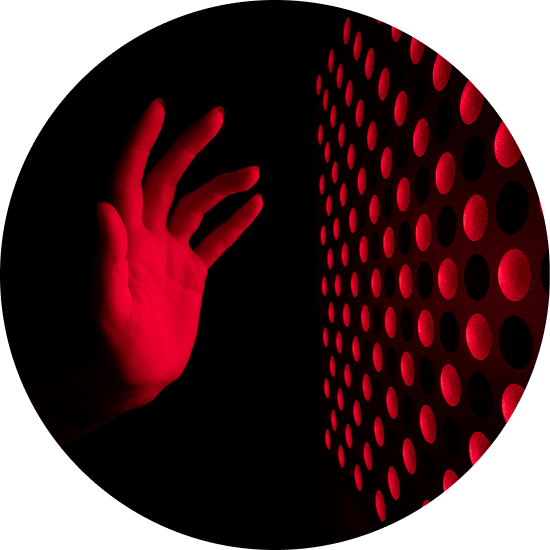About ARRC LED
Beyond Red Light Therapy
Red Light Therapy Devices Light‑years Ahead In Power, Features, and Research
Science-First Devices, Human-First Benefits
ARRC LED is renowned as the global leader in red light therapy beds and full-body LED devices. With more power delivered with every dose, broad applications ranging from athletics to autoimmune relief, and integrated technologies combined into a single treatment, the ARRC LED approach to energy medicine is unmatched in every way.
As a product design innovator, ARRC LED is not creating wellness devices for the future. They’re creating healthier futures with wellness devices today.
The technical pioneers have been in business for over 20 years, continually reinventing red light therapy and photobiomodulation technology from the outset. Operations are based in Southern California, and their devices are designed, engineered, and built in the U.S.A. in ISO 9001, military, and FDA-compliant facilities, offering the same or better prices than those of machines made cheaply and imported.

AS SEEN ON
Trademarks of The ARRC LED Difference
Specialist Supported
Leading researcher Dr. Michael Hamblin joined ARRC LED in 2018 to provide guidance and help build the truly singular system, which has been dose-optimized according to Dr. Hamblin’s specifications.
Specialist Supported
Leading researcher Dr. Michael Hamblin joined ARRC LED in 2018 to provide guidance and help build the truly singular system, which has been dose-optimized according to Dr. Hamblin’s specifications.
The Right Level of Power
ARRC LED typically delivers 50 to 70% more power than imported devices, operating at a measured 100 mW/cm2, compared to the 30 mW/cm² output of other devices.
The Right Level of Power
ARRC LED typically delivers 50 to 70% more power than imported devices, operating at a measured 100 mW/cm2, compared to the 30 mW/cm² output of other devices.
Calculated Innovation
ARRC’s LED scientists, engineers, and supporting medical specialists have leveraged their science and engineering acumen to increase phase angle, enhance longevity, and reduce fragility.
Calculated Innovation
ARRC’s LED scientists, engineers, and supporting medical specialists have leveraged their science and engineering acumen to increase phase angle, enhance longevity, and reduce fragility.
Backed By Science
There are over 6,000 clinical trials supporting the anti-inflammatory, energy-enhancing, analgesic relief on nerves, and circular increasing effects of photobiomodulation.
Backed By Science
There are over 6,000 clinical trials supporting the anti-inflammatory, energy-enhancing, analgesic relief on nerves, and circular increasing effects of photobiomodulation.
An Evidence-Based Process: The Science That Sets ARRC LED Apart
ARRC LED has been operating at the forefront of the industry for so long that the science is finally catching up to support what they’ve already been doing for years. Red light therapy involves 2–4 wavelengths from 620 to 700 nm, which are absorbed by cytochrome c oxidase (CCO) in the mitochondria.[1] While this is significantly beneficial, it functions much like the multivitamin you never feel.
ARRC LED devices can be limited to perform RLT as a singular function; it’s a button on the machine. But this boring setting isn’t the primary function. Their machines can do so much more.
Augmenting doses with frequency, expanding the wavelengths, phase angle, and power, and imprinting information patterns creates a system that patients can actually feel. A system that is dramatically beyond red light therapy, into an entirely new class of device.

While ARRC LED makes no claims regarding the direct effectiveness of our systems for any condition other than relief from minor aches and pains, they have seen incredible results from internal case studies—results that can be replicated. ARRC LED does not provide any medical advice. Anyone treating a specific medical condition should always consult their physician before altering treatment protocols.
[1]Maghfour J;Ozog DM;Mineroff J;Jagdeo J;Kohli I;Lim HW; (n.d.). Photobiomodulation CME Part I: Overview and mechanism of action. Journal of the American Academy of Dermatology. https://pubmed.ncbi.nlm.nih.gov/38309304/